Our 2021 Seedling Tree Sale has finally arrived! Additional information on this year’s selection and details on ordering can be found on our website.
Join us weekly as we highlight this year’s available tree species.
Last week we introduced you to a tree that you were probably already familiar with, the Ohio Buckeye.
Today we will take a closer look at a tree that you may not know quite as well – the Pawpaw. Though growing in popularity, many people are shocked to discover that North America’s largest edible native fruit (and as of 2009, Ohio’s official native fruit) is a common understory tree that you’ve likely encountered in past outdoor adventures.
Interested in adding the pawpaw to your landscape? Let’s take a look at its growing requirements…and a few other tidbits that make this a pretty unique plant.
Pawpaw
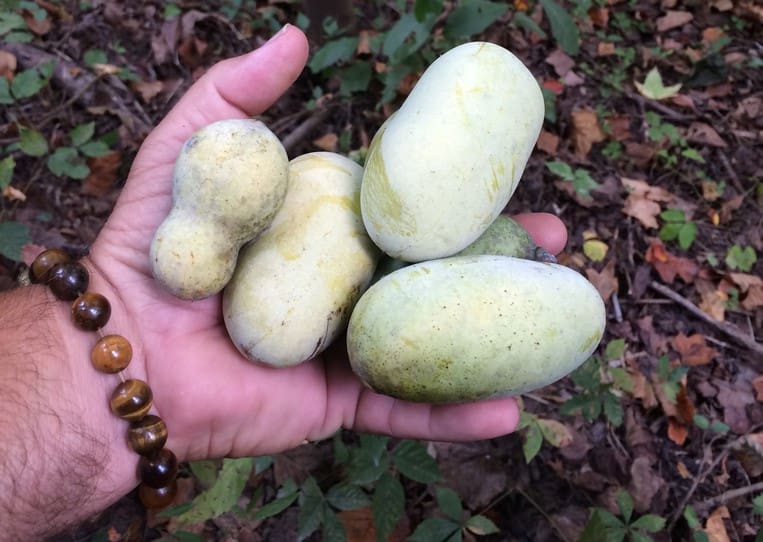
Planting Requirements
Pawpaws are a bit particular in terms of their growing requirements. To set them up for success, consider a site that has moist, deep, well-drained soils with a high amount of organic matter. In nature, pawpaws occupy the understory, often found growing in ravines, creek banks, and even steep hillsides.
As seedlings, pawpaws prefer areas that offer abundant shade, so it is advised that bare root seedlings are immediately transplanted to a shady site. As they mature, trees are more tolerant of sunlight. In fact, trees in full sun are more likely to flower and fruit than trees planted in shady locations.
Mature Size
When grown in the open and without canopy competition, pawpaws may reach 25 feet tall and 15 feet wide as an individual tree. When grown as an understory plant, pawpaws are shrubby and can often form large colonies, spreading primarily by root suckers. These root suckers are clones of the parent plant. As such, it is possible that an entire pawpaw colony is composed of only one plant!
It should be noted, that in order for fruit to be produced, two individual trees grown from separate seed sources are required. Pawpaw colonies composed of just one individual lack the genetic diversity needed for successful pollination and the fruit set that follows. If fruit is desired, be sure to plant at least two trees.
Wildlife Benefits
Pawpaw fruit is coveted by many wildlife species! From deer and raccoon, to squirrels and black bear, this fall sweet treat is in high demand. As a result, if YOU wish to harvest fruit, you’ll have to beat the wildlife — be sure to closely monitor ripening fruit.
The tree itself isn’t often browsed, as the twigs, leaves, and bark contain natural insecticides, making it a relatively pest-free species. One notable exception is the zebra swallowtail butterfly whose caterpillars feed on pawpaw leaves and depend on it as a host plant.
Phenology
Pawpaws produce beautiful, maroon flowers in the early spring, typically March-May depending on weather and location. Flowers rely on blowflies and carrion beetles for pollination and produce an odor similar to rotting meat in order to draw them in.
Because this odor is slight and the pollinators aren’t overly enthusiastic, many flowers go unpollinated and fruit set rates can be low. (Gardeners may consider hand pollinating flowers using a paint brush to expedite pollination and improve fruit yield.)
Flowers are soon followed by foliage that develops into large, shiny leaves that are spirally arranged on the twig. The fruit of pawpaw is large and yellowish-brown, containing multiple dark brown seeds and edible custard-like pulp. Fruit is typically mature and ready for harvest by September or October.
Family Tree
Within its plant family, Pawpaw is a bit of an odd ball! This species, along with others within the same genus (Asimina), are most closely related to species with tropical and subtropical origins. Perhaps you have heard of the fruit, soursop, or the aromatherapy essential oil, ylang-ylang? Both products come from tropical trees that are cousins to the pawpaw!
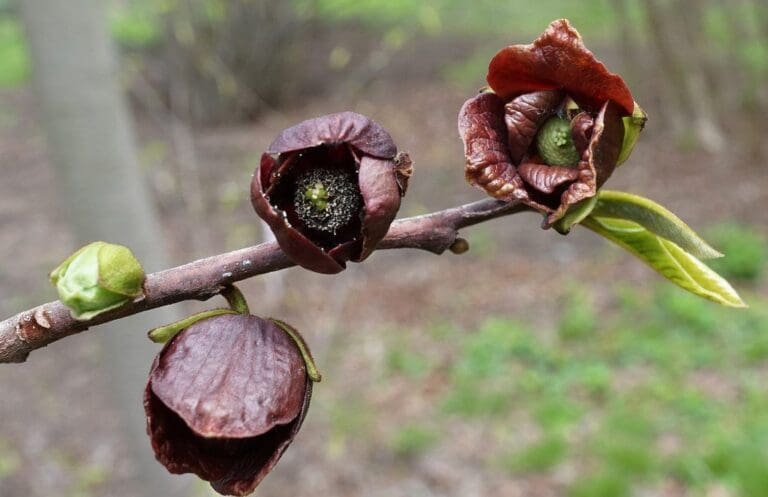


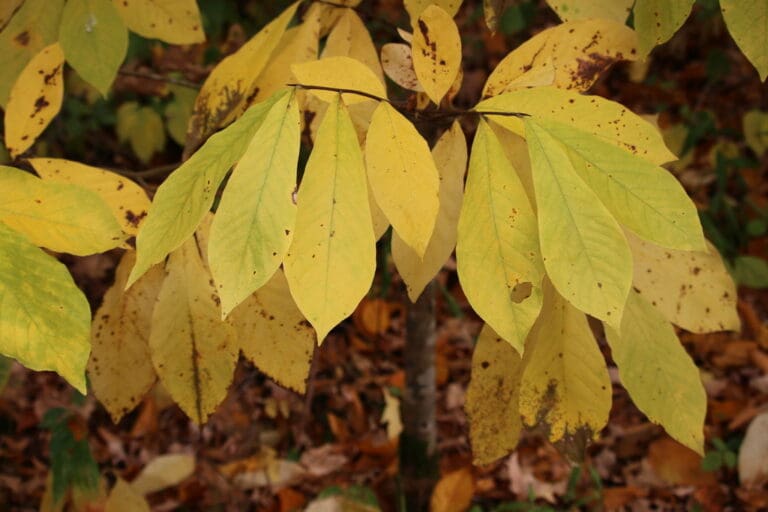
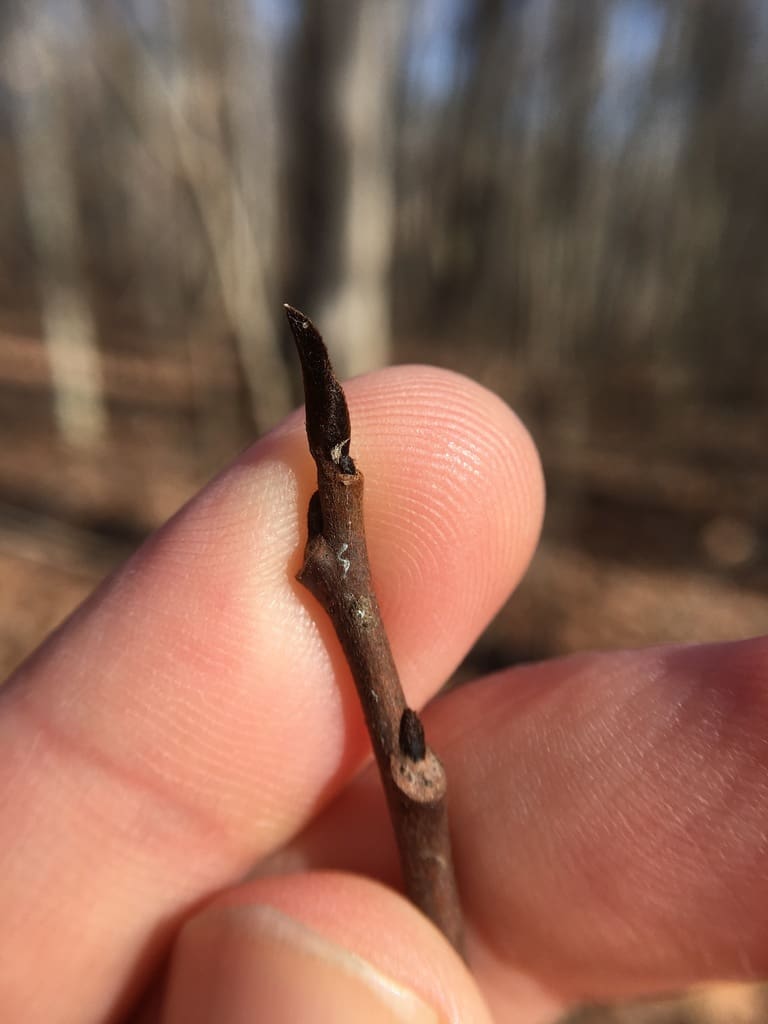
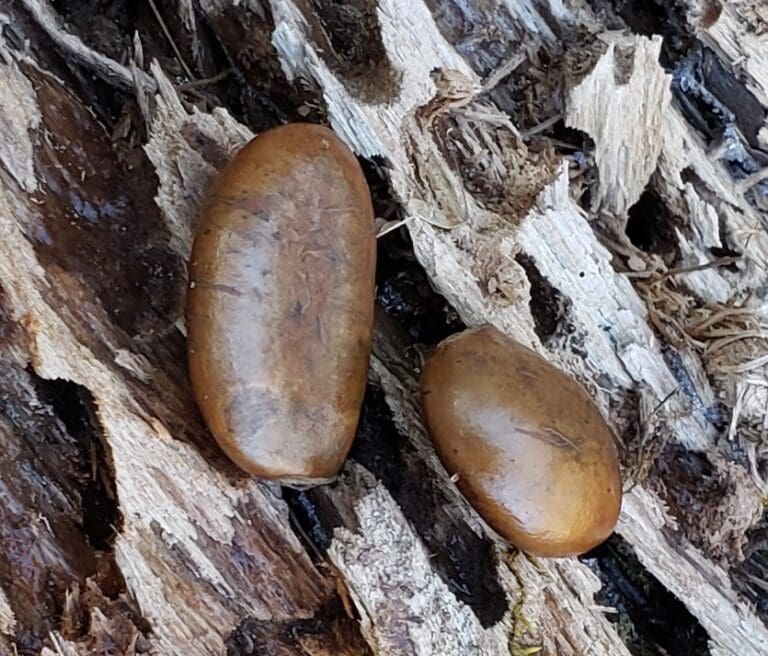
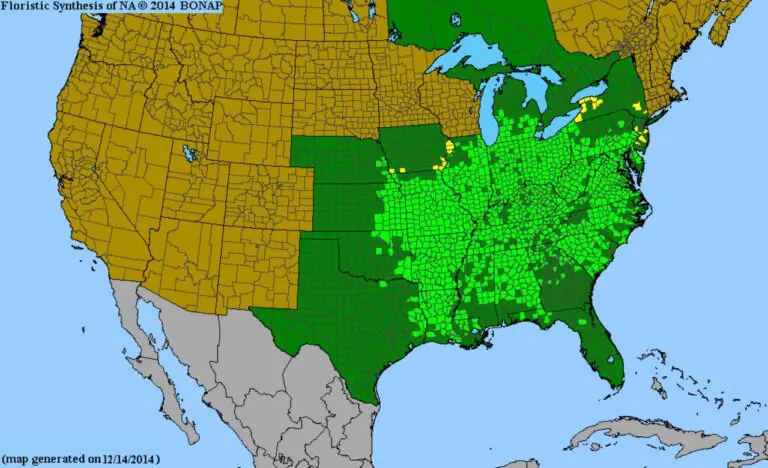
Visit Fairfield SWCD to order your Pawpaw tree seedlings today! Seedlings can be purchased in sets of 5, 25, or 100 while supplies last.
Purchased trees from us in the past? If so, enter our Facebook “Show us your Trees” contest! Visit our Facebook Page for details.
Additional information can be found below:
Growing Pawpaws as a Specialty Crop
23rd Annual Ohio Pawpaw Festival
National Tree Benefits Calculator
South Central Power: Plant the Right Tree in the Right Place
